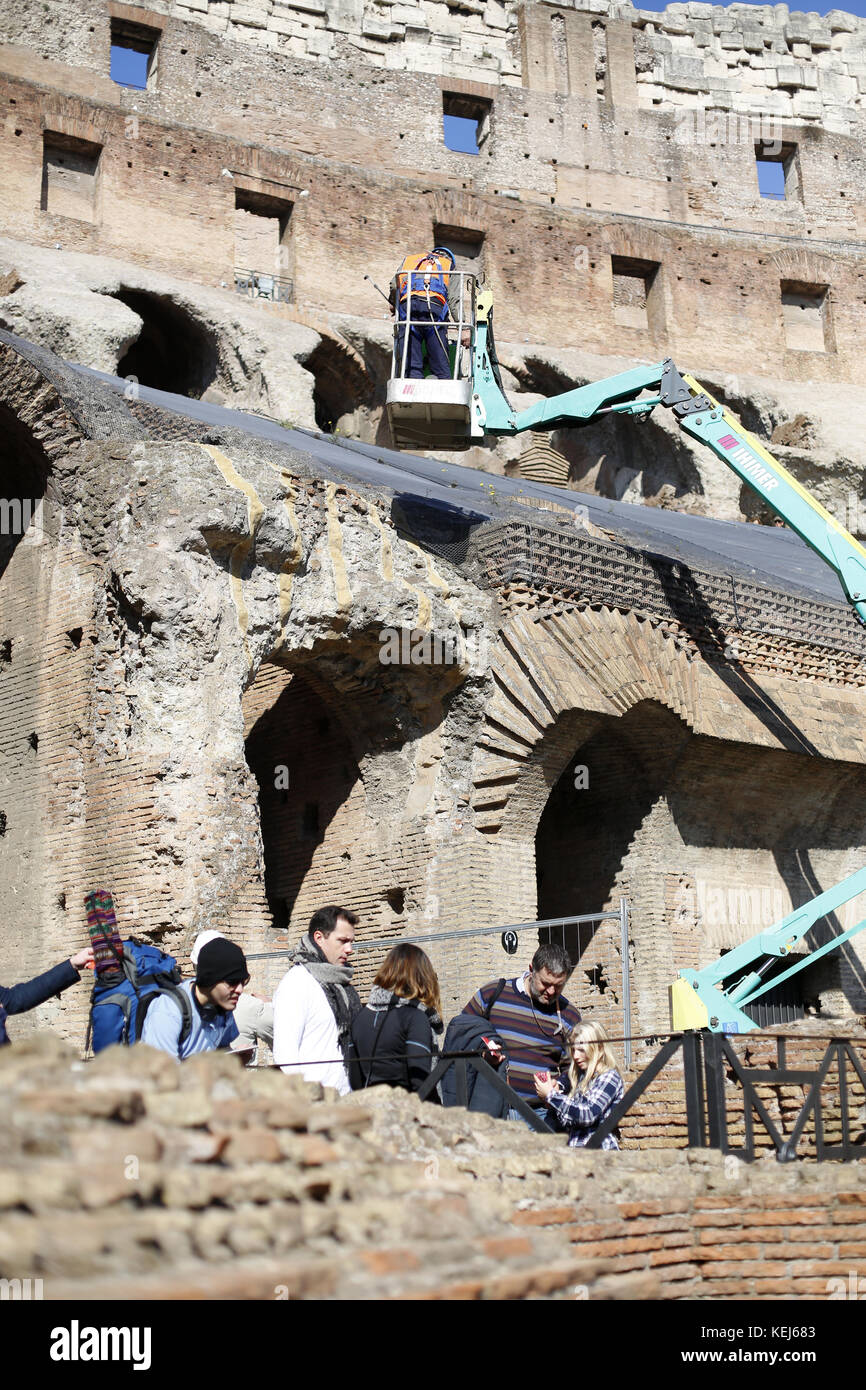Restoration work taking place in the Colosseum.

Image details
Contributor:
Michael Rawsterne / Alamy Stock PhotoImage ID:
KEJ683File size:
63.3 MB (3.5 MB Compressed download)Releases:
Model - no | Property - noDo I need a release?Dimensions:
3840 x 5760 px | 32.5 x 48.8 cm | 12.8 x 19.2 inches | 300dpiDate taken:
16 February 2017Location:
Colosseum, Rome, Metropolitan City of Rome, ItalyMore information:
Construction on the Colosseum began under Emperor Vespasian (69-79) and was completed under his son Titus (79-81) in 80 AD. It was built on the site of an artificial lake created by Nero in this valley between Rome's many hills, in front of his Domus Aurea palace. The arena was then known as the Flavian Amphitheatre, after the family name of the emperors who built it. The name "Colosseum" was not used until 7th century, and derives from the colossal statue of Nero that once stood here. After Nero's death, the statue was transformed into a representation of Helios, the sun god. It remained standing until the Middle Ages, when it was probably melted down for its bronze. The amphitheatre was used for gladiatorial combats, mock sea battles, animal hunts, executions, re-enactments of famous battles, and dramas based on Classical mythology. The inaugural festival of the Flavian Amphitheatre, which was the largest amphitheatre in the world, lasted 100 days, during which over 5, 000 wild beasts were killed in the arena. The arena was restored in about 230 AD by Emperor Alexander Severus (222-35). The statistics of those who met their deaths at the Colosseum during another festival, held in 240 AD, are staggering: 2, 000 gladiators; 70 lions; 40 wild horses; 30 elephants; 30 leopards; 20 wild asses; 19 giraffes; 10 elks; 10 hyenas; 10 tigers; 1 hippopotamus; and 1 rhinoceros. The Flavian Amphitheatre was damaged by fire and earthquake several times but was continually restored until the end of the 5th century. Gladiatorial combats were outlawed by the Christian emperor Honorius in 407 and fights with wild beasts were banned in 523. After this, the arena went out of use. According to the bishop and church historian Theodoret, Honorius was moved to ban the bloody spectacle of the gladiators because of a simple monk named Telmachus: Telemachus is the only Colosseum martyr of whom there is any evidence.